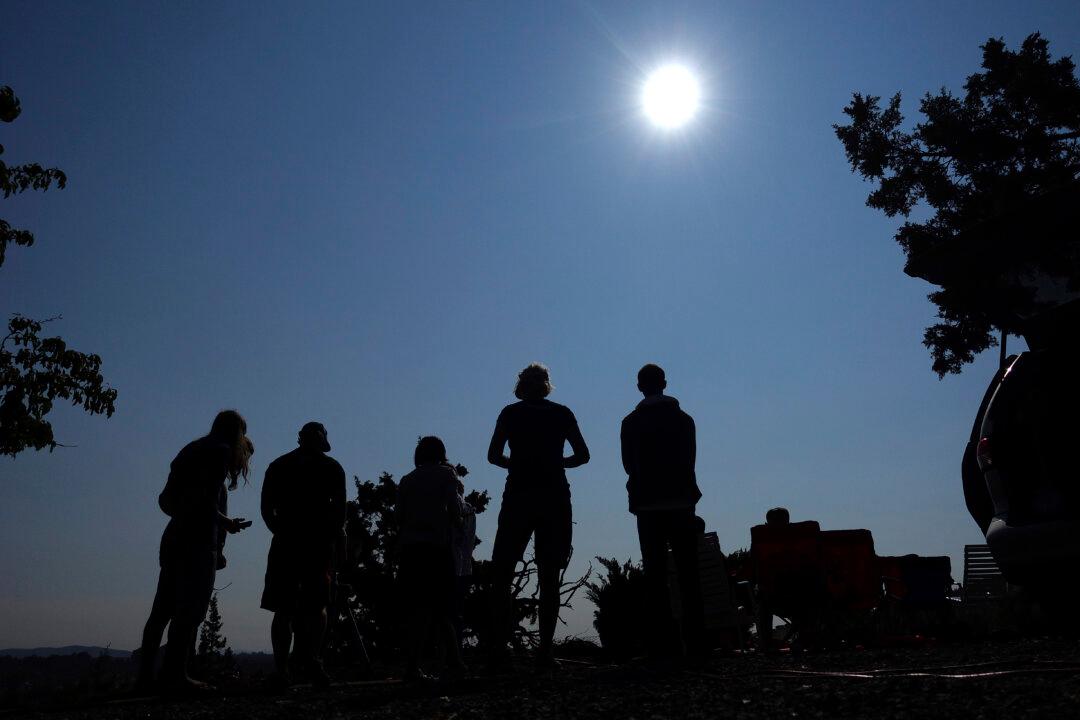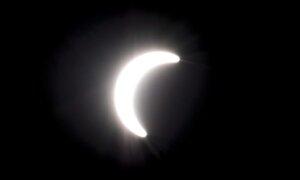Previous reports of solar eclipses shows a nation mesmerized. And it’s no wonder—it is, after all, an exciting time to be watching the sky.
Commentary
Believe it or not, there’s a man who claims to be “the world’s only total solar eclipse journalist.” And right now, he’s in his element, fielding questions from around the world.
In an
interview with EarthSky founder Deborah Byrd, Mr. Carter, who hails from the UK, said he’s made the trek to watch seven total solar eclipses in his lifetime.
“[Y]ou can see all kinds of beautiful, beautiful phenomena either side of totality,” he explained, “but actually it’s all about looking at the sun and seeing its corona.”
In addition to documenting the eclipses he’s seen, Mr. Carter also writes about past eclipses, like the “
landmark solar eclipse” that occurred on March 7, 1970.
The 1970 eclipse wasn’t as widely visible in the United States as the upcoming eclipse will be. Mr. Carter sent me
an online map showing how the 1970 eclipse tracked, crossing Florida and barely hugging a portion of our east coastline before clipping Nova Scotia, blazing through Newfoundland, and then heading out to sea.
Newspaper TV schedules at the time show how special news coverage of that event began at noon on Saturday. (And for older kids who want to get sentimental, that was directly after “The Banana Splits Adventure Hour” and the original “Flintstones,” because children
used to watch cartoons on Saturday morning.)
There’s a great
time capsule on YouTube showing the original CBS News Special Report from that year. It begins with a shot of how the “
eclipse of the century” began in Mexico 30 minutes before, then switches to live coverage with correspondents in various cities along the east coast. An eerie music plays, which we’re told is “geomagnetic music—a computer readout of the sun’s magnetic disturbance in the Earth’s atmosphere.”
The report shows a nation mesmerized. And it’s no wonder—it was, after all, an exciting time to be watching the sky.
It had been less than a year since NASA’s Apollo 11 mission propelled Americans Neil Armstrong and Buzz Aldrin into history as they became the
first men to walk on the moon, and less than four months since Apollo 12 astronauts Alan Bean and Pete Conrad left the lunar modular Intrepid to follow in their footsteps. The following month would see the Apollo 13 landing—or
so everyone thought at the time.
Perhaps the most entertaining part of the CBS report occurs in
Valdosta, GA, where the eclipse plunged a cloudy day into total darkness. Viewers across the nation were stunned as they stared at grainy, black TV screens. “I never thought I would find a dark screen an eerie sight,” the host says, “but somehow it is.”
Mr. Carter tells us the 1970 eclipse is related to the 2024 eclipse because “Every 54 years, the sun, the moon, and the Earth combine to produce an almost identical total solar eclipse.”
Livescience.com
tells us it’s “the same celestial mechanics” responsible for both eclipses, though the exact breakdown gets murky for all but the most astronomically minded.
Here in New York State, it will be the first total solar eclipse since January 1925. That eclipse was also
covered widely in the press, and was studied as extensively as one could do in the early 20th century. We’re told a dirigible was launched from Lakehurst, New Jersey (the naval air station later made famous by the
Hindenburg disaster) to take pictures of the event from the sky. Additionally, the Army Air Corp sent up 25 planes from legendary
Mitchell Field for the same purpose. A newspaper from that time reported that all pilots were ordered to carry flashlights in the cockpit to be used during totality.
In New York City, banks and stock exchanges were closed until after the moon and sun had finished their performance. Police patrols were set up to guard against “crimes of darkness.”
Farther west, the Niagara Gorge Railroad lured visitors with descriptions of Niagara Falls’s “massive ice bridge” and “ice-choked rapids” that were sure to enhance the eclipse. “Not since the coming of the white man has Niagara Falls been in the direct path of a total solar eclipse,” their advertisement declared. “Old rivermen say that this winter’s scenery has never been surpassed within the compass of their memory,” they added. (To see some historical photographs from the 1925 eclipse click
here.)
To be sure, the events planned in Niagara Falls for this eclipse will surpass anything that happened in 1925. In addition to hosting NASA, plans include an
array of festivities including fireworks displays.
As for the world’s only solar eclipse journalist, Mr. Carter, he tells me he’ll be watching his eighth total solar eclipse from Texas. When asked by EarthSky what the allure is for him personally, he said that part of it is just watching people’s reactions as they share a collective experience, especially at totality. He added, however, that the whole thing can be quite “bizarre”:
“There’s a
primeval feeling sometimes, when the sun disappears and it gets cold, and you sometimes get ... an eclipse wind, and it feels like the end of days .... Some people ... they get a knot in their stomachs where ... they know the sun’s going to come back, but they just don’t believe it within themselves, and it can be quite a shocking experience.”
Views expressed in this article are opinions of the author and do not necessarily reflect the views of The Epoch Times.







